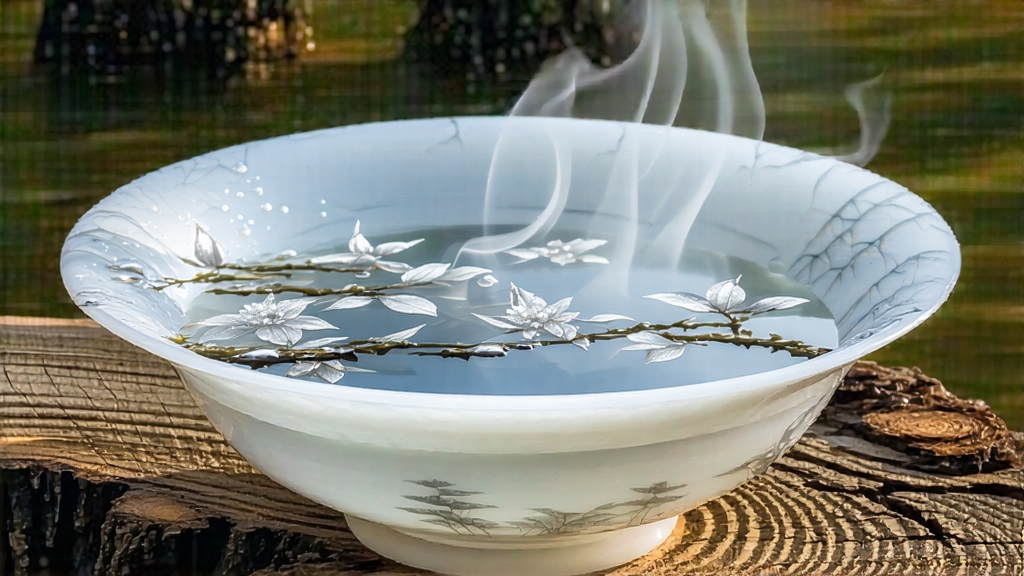
If green tea is the youthful face of Chinese tea and pu-erh its weathered elder, then white tea occupies the twilight hour when the sky is neither day nor night. Within this twilight realm, the most luminous star is Bai Hao Yin Zhen—literally “White Hair Silver Needle”—a tea so delicate that it appears to be spun moonlight rather than plucked leaf. Grown in the granite hills and sea-misted valleys of Fuding, Fujian Province, Yin Zhen has been cherished since the late Song dynasty, yet it remains less known outside China than dragon-well or tie-guan-yin. This article invites the international reader to discover why, for many Chinese tea masters, Yin Zhen is the purest expression of terroir, seasonality and restraint.
-
Historical whispers
The first written record of white tea appears in the Song-era “Treatise on Tea” by Emperor Huizong (1107 CE), who praised “white buds of the first spring” presented at court. Those buds were almost certainly wild predecessors of today’s Yin Zhen, picked from seed-grown Da Bai (Big White) tea trees that still dot the Taimu mountain range. During the Ming dynasty, the imperial court shifted from compressed tea cakes to loose leaf, and Fuding farmers discovered that simply air-drying the downy buds preserved their fresh aroma while creating a new, lighter category. Export began in the nineteenth century via Fuzhou port, where European traders nicknamed the buds “silver needles” and paid for them with equal weights of silver. The tea became a diplomatic gift: in 1972 Premier Zhou Enlai served Yin Zhen to President Nixon, sealing its reputation as China’s gentlest welcome. -
Terroir and cultivar
Authentic Yin Zhen is produced only in Fuding and nearby Zhenghe, within 27° north latitude and 200–800 m elevation. The region’s red lateritic soil, rich in iron and quartz, drains quickly after the subtropical monsoon, forcing roots to dive deep for minerals. Morning fog from the East China Sea blankets the hills, diffusing sunlight and prompting slow synthesis of amino acids. Two cultivars dominate: Fuding Da Bai (Camellia sinensis var. sinensis cv. Fuding Dahaocha) and the slightly broader-leaf Zhenghe Da Bai. Da Bai’s buds can reach 3.5 cm in early spring, sheathed in a visible down that reflects light like frost—hence the “white” in white tea. Because only the unopened bud is plucked, a single kilo of Yin Zhen requires roughly 30,000 hand-selected tips, each plucked between 9 a.m. and 2 p.m. when dew has evaporated but before the sun wilts the cells. -
Craftsmanship: the art of doing almost nothing
Unlike green tea, Yin Zhen is never pan-fired or rolled; its processing is a meditation on abstinence. The freshly harvested buds are spread one layer thick on bamboo trays and left to wither for 36–48 hours in a ventilated loft. The key is to ride the diurnal temperature curve: warm days coax enzymatic oxidation, cool nights fix the fragrance. Masters speak of “borrowing the wind” by adjusting louvered windows every hour, ensuring an even loss of moisture from 75 % to below 8 %. When the bud feels feather-light and exudes a faint hay-sweet aroma, it is transferred to a low-temperature dryer (40 °C) for a final 20-minute “foot-setting” bake. The entire process uses no machines beyond a thermometer and the craftsman’s palm—an intimacy that explains why Yin Zhen tastes like the memory of spring itself. -
Grades and micro-lots
Commercial labels often lump all needle-shaped white tea under “Yin Zhen,” but connoisseurs distinguish three tiers. Village-grade buds, harvested after Qingming festival, carry more chlorophyll and a grassy edge. Core-grade, picked the week before Qingming, offers the classical balance of white down and jade green stem. The pinnacle is “Taimu Mist,” plucked during the first three days of the lunar new year when buds are still winter-dormant; these needles shimmer ivory-white and steep into a liquor so pale it resembles glacier melt. Each grade responds differently to water temperature, making precision brewing essential. -
Brewing: choreography of restraint
Western instructions often recommend 80 °C for white tea, yet